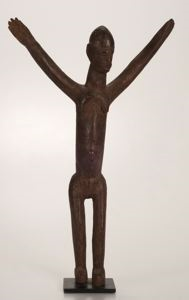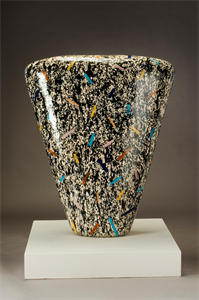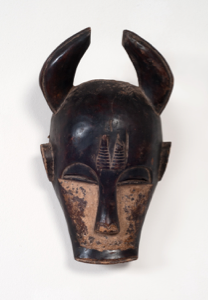
Lobi Peoples
African
Carved wooden figures like this one serve the Lobi as intermediaries between the community and spirits or "thila". The Lobi recognize many different spirits but each village identifies a single dominant "thil" that protects it. A "thildaar," or diviner, interprets the will of the spirit for the community.
Unlike many African cultures, the Lobi do not have specialist carvers. People typically make their own sculptures, resulting in a wide variety of forms and finish. Lobi figures, however, are usually identifiable by characteristic scarification patterns, especially around the navel. Lobi sculptures generally resemble people, but they are not portraits. They take a wide variety of poses and postures, as the thila dictate.
African
Figure (Bateba Ti Puo)
20th century
Object Type:
Sculpture
Dimensions:
17 3/4 x 11 1/8 x 4 in. (45.09 x 28.26 x 10.16 cm)
Medium and Support:
Wood
Accession Number:
2013.0017.0023
Credit Line:
Gift of Dileep and Martha Mehta
Carved wooden figures like this one serve the Lobi as intermediaries between the community and spirits or "thila". The Lobi recognize many different spirits but each village identifies a single dominant "thil" that protects it. A "thildaar," or diviner, interprets the will of the spirit for the community.
Unlike many African cultures, the Lobi do not have specialist carvers. People typically make their own sculptures, resulting in a wide variety of forms and finish. Lobi figures, however, are usually identifiable by characteristic scarification patterns, especially around the navel. Lobi sculptures generally resemble people, but they are not portraits. They take a wide variety of poses and postures, as the thila dictate.
Portfolio List
Click a portfolio name to view all the objects in that portfolio
This object is a member of the following portfolios:
Your current search criteria is: Portfolio is "Classification: Sculpture" and [Object]Display Artist is "Lobi Peoples".

 by Object Type (2)
by Object Type (2)

